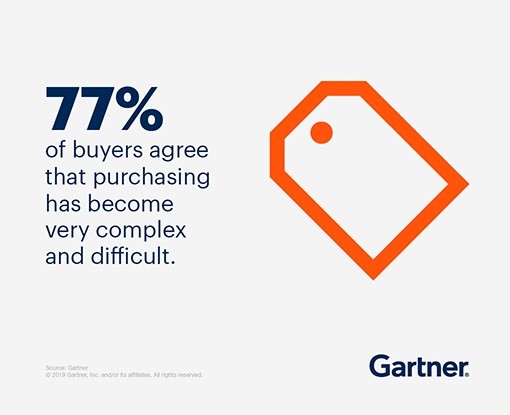How intent can drive higher levels of account engagement for B2B marketers and turn ABM into ABX? Accuracy is key when it comes to understanding data and as a result, brands can build a stronger two-way dialogue with potential customers, depending on the specific needs, profile, and purchasing criteria of each account individually.
This powerful account information can help target the message and content you deliver to meet the exact needs of each account. This can speed up the discovery process and lead to a higher and faster customer conversion rate.
By following this principle and continuing to leverage data-driven account-level insights deeper into the account lifecycle, marketers have the opportunity to develop a stronger ongoing engagement with customers, expand and diversify relationships within the client organization and ultimately expose more opportunities. This is where account-based marketing (ABM) can evolve into an account-based experience (ABX).
ABX is where the principles of data-driven engagement extend to every point of account touchpoint – from onboarding to renewals and from account management to customer success to create a cohesive experience, relevant and of great value to customers.
Why ABM needs to evolve
Account-based marketing (ABM) is a term that has been around for a while, but it only started to gain momentum about five years ago. The main problem with its effectiveness in this current market is that in the name “marketing” there is no indication or connection to sales. However, sales and marketing have always been and always will be so intrinsically linked, especially when it comes to their main drivers. How do we encourage engagement? How do we focus on our most important customers? How do we define our ideal client?

In the established ABM model, it was the marketing team that gathered the information to be dispersed among the sales teams and told sales where to focus their efforts. But it is always the sales teams who have more direct contact and dialogue with potential and existing customers. As a model, that doesn’t make a lot of sense.
ABX tackles this problem head-on, taking ABM to the next level, version 2.0 if you will. Start by recognizing that it’s not just marketing that is important in any customer relationship. What matters is how the entire organization interacts with each customer throughout the customer lifecycle, taking into account the entire customer journey.
The customer journey, however, is once again an outdated marketing term, which typically only focuses on the phase from initial customer interest to selling and rarely takes into account renewal cycles or upselling or crosses in progress. The first transaction with a new customer is important, it should only be the start of the journey, the start of an ongoing relationship that develops a deeper understanding of the account and provides a life of value.

This means that for marketers to be more effective in the long run, they need to engage and collaborate with customer success and sales teams and, to some extent, customer service as well. These functions must work together seamlessly to ensure a single pane of glass on each client so that there is consistency and continuity in every interaction with the client. As many of us know from bitter experience, as a sales rep there is nothing worse than performing a quarterly review to find that there is a risk of a completely unexpected but completely preventable quit. This is where ABX is really a game-changer.
The Evolution to ABX
When it comes to the account-based experience, it’s important to understand what it is and what it isn’t. Our definition is as follows:
“Account-Based Experience (ABX) is a methodology that relies on successful marketing, sales, and customer teams to create personalized customer journeys centered on individual accounts. ABX, the next generation of ABM, ensures that all interactions with the brand through the customer experience are focused on end-users and their needs”.

It is important to note that ABX does not replace ABM; it’s more of an evolution. We’re not saying brands shouldn’t be ABM anymore, but we think we’ll see ABM mature into ABX in the next few years. Businesses need to recognize this, especially those new to ABM. They should think about their approach and explore the benefits of directly accelerating ABX to make their future at the ABM and demonstrate a larger return on their strategy.










